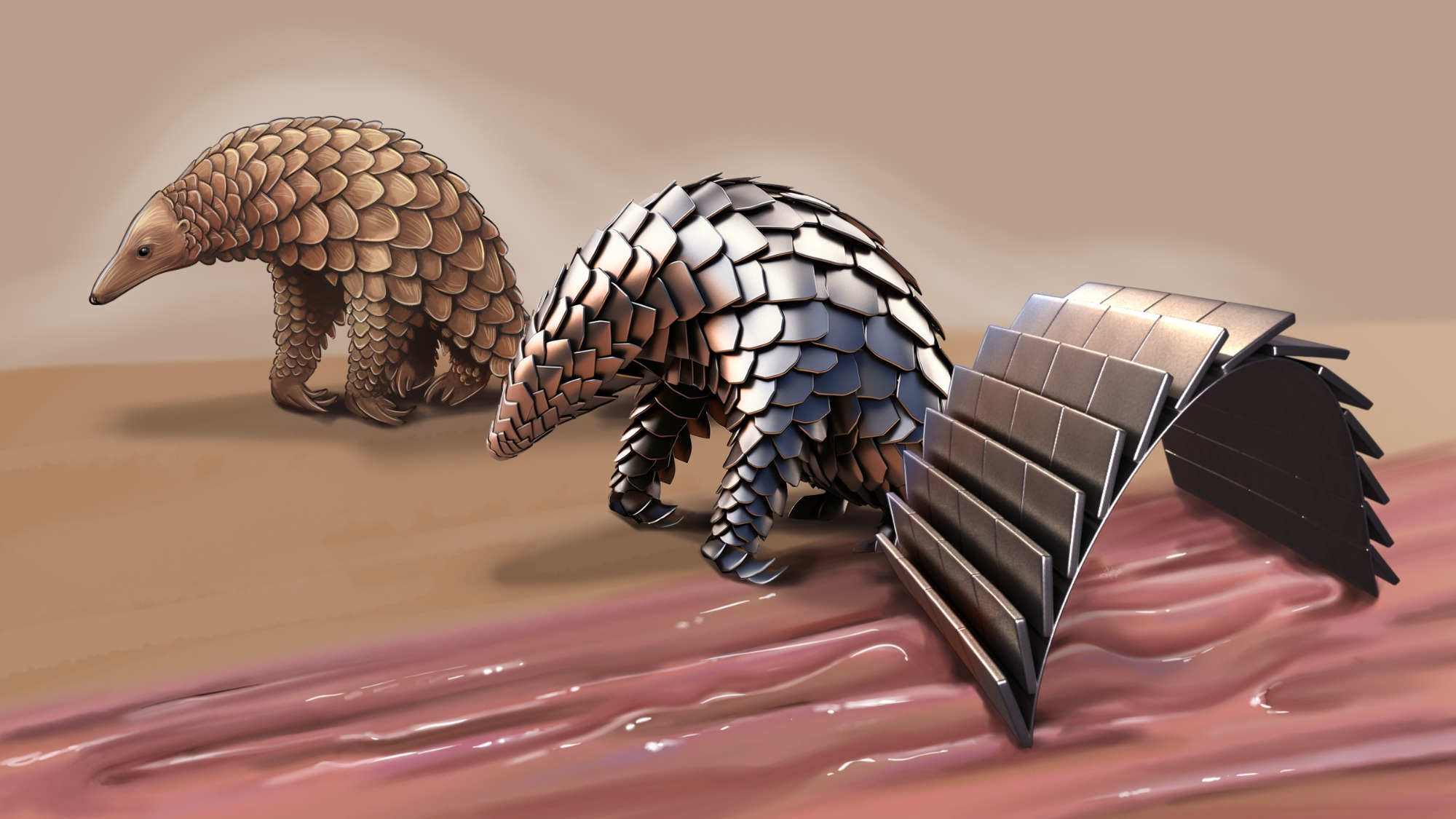

If you don’t know what a pangolin is, then today is your lucky day. Primarily found in tropical regions of Africa and Asia, the tiny, adorable, sadly endangered creature is the only mammal known to be covered completely in overlapping scales composed of durable keratin—the same material that makes up your nails and hair. When needed, the flexible scales’ structure allows a pangolin to curl up into a defensive ball—a novel evolutionary design that recently inspired a team of engineers’ newest invention.
[Related: The Pangolin Finally Made It Onto The List Of The World’s Most Protected Animals.]
As described in a paper published on June 20 with Nature Communications, researchers at the Max Planck Institute for Intelligent Systems in Germany created a robot that could mimic a pangolins’ roly-poly resiliency. Instead of doing so for protection, however, the miniature robot uses its scaly design to quickly traverse environments while simultaneously carrying small payloads. With an added ability to heat to over 70 degrees Celsius (roughly 158 degrees Fahrenheit), the team’s barely two-centimeter-long robot shows immense promise for delivering medication within patients, as well as helping in procedures such as mitigating unwanted internal bleeding.

The pangolin-inspired robot features a comparatively simple, two-layer design—a soft polymer layer studded in magnetic particles, and a harder exterior layer of overlapping metal scales. Exposing the robot to a low-frequency magnetic field causes it to roll into a cylindrical shape, and subsequently directing the magnetic field can influence the robot’s movement. While in this rolled shape, the team showed that their pangolin-bot can house deliverables such as medicine, and safely transport them through animal tissues and artificial organs to a desired location for release.
[Related: These 2D machines can shapeshift into moving 3D robots.]
Exposing their robot to a high-frequency magnetic field, however, offers even more avenues for potential medical treatment. In such instances, the pangolin robot’s metals heat up dramatically, providing thermal energy for situations such as treating thrombosis, cauterizing tumor tissues, or even stopping internal bleeding. “Untethered robots that can move freely, even though they are made of hard elements such as metal and can also emit heat, are rare,” reads a statement from the Planck Institute, adding that researchers’ new robot “could one day reach even the narrowest and most sensitive regions in the body in a minimally invasive and gentle way and emit heat as needed.”
